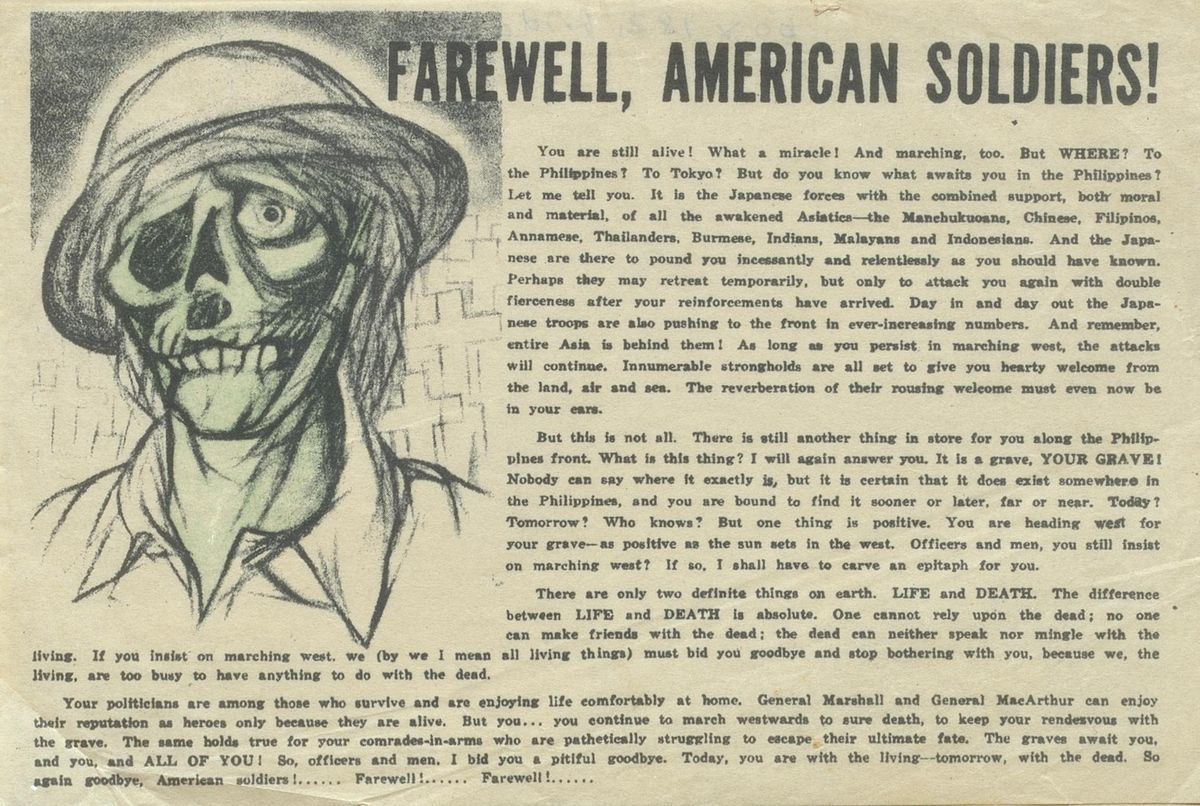Japanese Propaganda

This is a Japanese made depiction of Franklin D. Roosevelt. The Japanese artist Kondō Hidezō gave FDR fangs and a zombie-like look to show the Japanese people that the president of the United States was not human and a monster that only meant destruction (Brcak & Pavia 1994, 680). This was an observation made by Nancy Brcak and John R. Pavia in their publication "Racism in Japanese and U.S. Wartime Propaganda". Nancy Brcak is the associate professor and chair of the department of art history at Ithaca College and John R. Pavia is the associate professor of history at Ithaca College. The artist, Kondō Hidezō, had his piece published in the Japanese magazine “Manga”. “Manga” was one of the few magazines that the Japanese government allowed to print during WWII.

“Farwell, American Soldiers!” was a leaflet made by the Japanese warning landing US soldiers of the things that awaited them in the Philippines. They promise some of the most violent fighting they had ever seen along with constant and never ending bombing with waves upon waves of Japanese soldiers. It also criticizes the US political leaders and makes them out to be some unreachable upper class that sit comfortably at home while they have men fight their wars for them. Breaking the morale of the enemy’s troops has proved very effective and this is Japan’s attempt at just that. in a journal made by Martin F. Herz about the psychological lessons of leaflets during WWII he mentions how leaflets can ruin morale for troops like in Bastogne. German and American forces had been fighting and a leaflet was dropped and was intended to raise the morale of US troops but instead explained how the German forces were much more prepared and heavily armed than the Americans and how the Americans "really had no reason to be as self-confident" (Herz 1949, 484).
